Several potential causes for leaf loss in tart cherry
Bacterial canker, cherry leaf spot, cherry yellows, green ring mottle or fungicide phytotoxicity could be the reasons why defoliation is occurring in many tart cherry orchards.
Defoliation has been observed in many tart cherry orchards across the region. The list of potential culprits causing this leaf drop is long, and we are still investigating the cause of defoliation in many blocks.
First, bacterial canker is prevalent in tart cherry blocks with our cool, wet spring. This disease is most problematic in sweet cherries, but under the right conditions, bacterial canker can be present in tart cherry following cold, wet weather during bloom. Leaves that had bacterial canker infections earlier this season are now turning yellow and dropping from the trees. Canker symptoms on tart cherry leaves are characterized by large, brown spots that are circular to somewhat angular. Sometimes these spots coalesce and form large, dead areas on the leaves; leaves with bacterial canker also have a tattered appearance (Photo 1). We are seeing leaf drop from these early bacterial canker infections at this time, particularly in tart cherry.
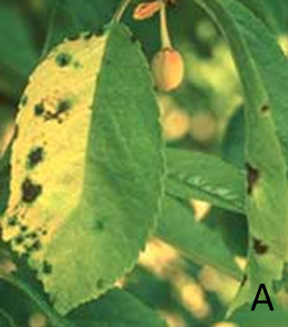
Photo 1. Bacterial canker. Photo credit: A. Jones and E.
Lizotte, MSUE.
The next offender on the defoliation list is cherry leaf spot. This disease is notorious for dropping leaves; however, with good spray coverage and timing, leaf loss does not usually occur until sometime after harvest. The early 2011 season was fraught with rainy weather, and growers were challenged to keep foliage covered to prevent cherry leaf spot infection. We suspect growers had wash-off with the prolonged wetting period early in the season, and it was difficult to get back into the orchard to reapply fungicide applications with the continuous rain. This scenario resulted in cherry leaf spot infections in May, and many of these early-infected leaves are now dropping from the tree. Photo 2 is a good example of leaves infected with cherry leaf spot.
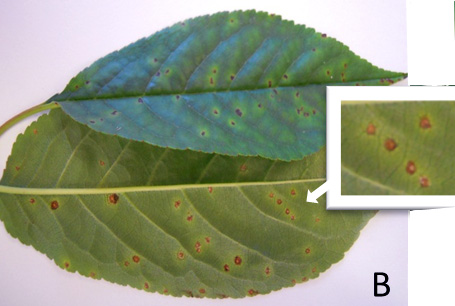
Photo 2. Cherry leaf spot. Photo credit: A. Jones and E. Lizotte, MSUE.
Cherry yellows is a viral disease that also causes tart cherries to drop their leaves. This classic leaf-yellowing disease is caused by the prune dwarf virus. Defoliation is happening now and often occurs in waves throughout the season. The severity of leaf drop is temperature dependent at 30 days prior to defoliation, and cold temperatures result in increased development of later symptoms. Leaves that are infected by cherry yellows have a yellow and green mottling that is not in a distinct pattern (Photo 3).
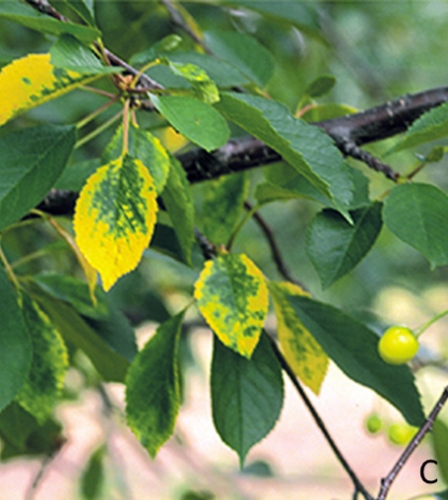
Photo 3. Sour cherry yellows. Photo credit: A. Jones and E. Lizotte, MSUE.
Another viral disease that causes defoliation in tart cherry is green ring mottle virus. We do not regularly observe this disease as most of our trees are certified virus-free. Leaves infected with green ring mottle virus are similar to those infected with cherry yellows, except that the green spots within the yellow leaf are in a ring pattern (Photo 4).
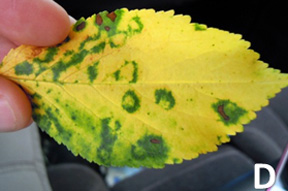
Photo 4. Green ring mottle. Photo credit: A. Jones
and E. Lizotte, MSUE.
The last two potential causes of leaf drop this season are from phytotoxicity caused by spray applications that are still under investigation. Growers have reported leaf loss after using dodine and copper products. We cannot conclude for certainty that these materials caused the leaf loss as it has not been consistent in all orchards. There may be secondary factors in blocks that caused leaf drop, such as temperature, humidity, slow drying time, fast drying time and other factors. Dodine has not been recommended for sweet cherries because of the potential for phytotoxity, and we have observed phytotoxity in Balatons in past seasons. We suspected that dodine phytotoxity in Balatons is a result of the sweet cherry parentage in this variety. This season, growers (particularly from Wisconsin) have observed phytotoxity in Montmorency and the common denominator in those blocks appears to be the use of dodine (no photo available at this time). Leaves that are damaged from spray applications will eventually drop from the tree.
Lastly, we have some reports of phytotoxicity from copper products (Photo 5). Many growers that used copper in the 1960s remember the phytotoxity issue in tart cherries with copper use, as copper was one of the recommended fungicides for cherry leaf spot control. More recent data have shown that copper products are particularly effective against cherry leaf spot and provide excellent control at 1.2 pounds of metallic copper. However, the potential from phytotoxicity from copper use remains a concern for many growers, and this year, we have evidence that suggests that some copper formulations can cause some leaf loss. But as mentioned above, we have blocks where copper was used and defoliation was a concern while other blocks received the same amount of copper product and resulted in significantly less leaf loss.
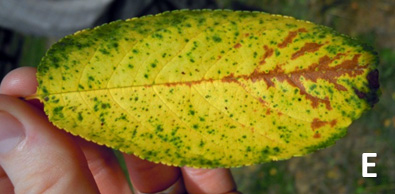
Photo 5. Copper phytotoxicity. Photo credit: A. Jones and E. Lizotte, MSUE.
Until we further investigate this issue, growers should not abandon the use of copper products, particularly as those blocks that have used copper exclusively this season are some of the cleanest cherry leaf spot orchards in the region. Some of this phytotoxicity may also be related to the amount of lime used in a copper spray – many growers have reduced the lime in the spray tank as it is difficult to use. Reduced amounts of lime may have influenced the phytotoxicity in the copper applications.
Dr. Sundin's work is funded in part by MSU's AgBioResearch.



 Print
Print Email
Email




